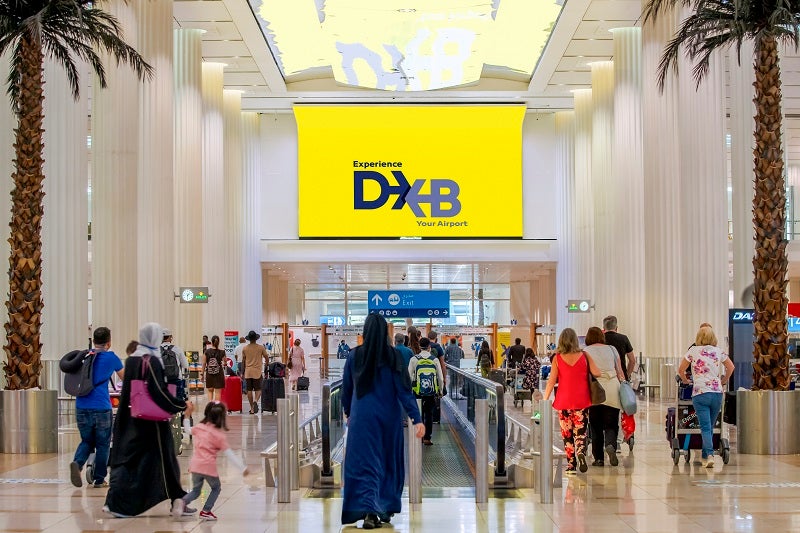
Dubai International Airport (DXB) has recorded 13.6 million passengers in Q1 2022, compared with 5.7 million passengers a year ago and up 15.7% from 11.8 million passengers in Q4 2021.
It is the second consecutive quarter that the airport has exceeded the 10 million mark in passenger volume.
This is said to be the airport’s busiest quarter since 2020.
DXB is connected to 193 destinations across 92 countries through 73 scheduled international carriers and welcomed 5.5 million passengers in March.
However, its cargo segment saw a decline in the first three months of the year, during which it handled only 519,555 tonnes of cargo versus 614,834 tonnes of airfreight in Q4 2021, a decrease of 15.5%.
The airport recorded 81,966 flight movements in Q1 2022, up 5.8% from 77,475 in Q4 2021.
How well do you really know your competitors?
Access the most comprehensive Company Profiles on the market, powered by GlobalData. Save hours of research. Gain competitive edge.

Thank you!
Your download email will arrive shortly
Not ready to buy yet? Download a free sample
We are confident about the unique quality of our Company Profiles. However, we want you to make the most beneficial decision for your business, so we offer a free sample that you can download by submitting the below form
By GlobalDataDubai Airports CEO Paul Griffiths said: “DXB’s performance over the past successive quarters is nothing short of impressive and is a direct outcome of Dubai’s clear strategy and efforts to restore international air connectivity and mobility and lead the global aviation industry out of an unprecedented crisis.
“While the recovery was initially led by point-to-point traffic, which continues to exceed pre-pandemic levels, the opening of international travel across many key markets has enabled transfer traffic to rebound to 60% of 2019 levels.
“The outlook for the year remains strong with annual traffic now projected to reach 58.3m, exceeding initial forecasts by a significant margin.”







